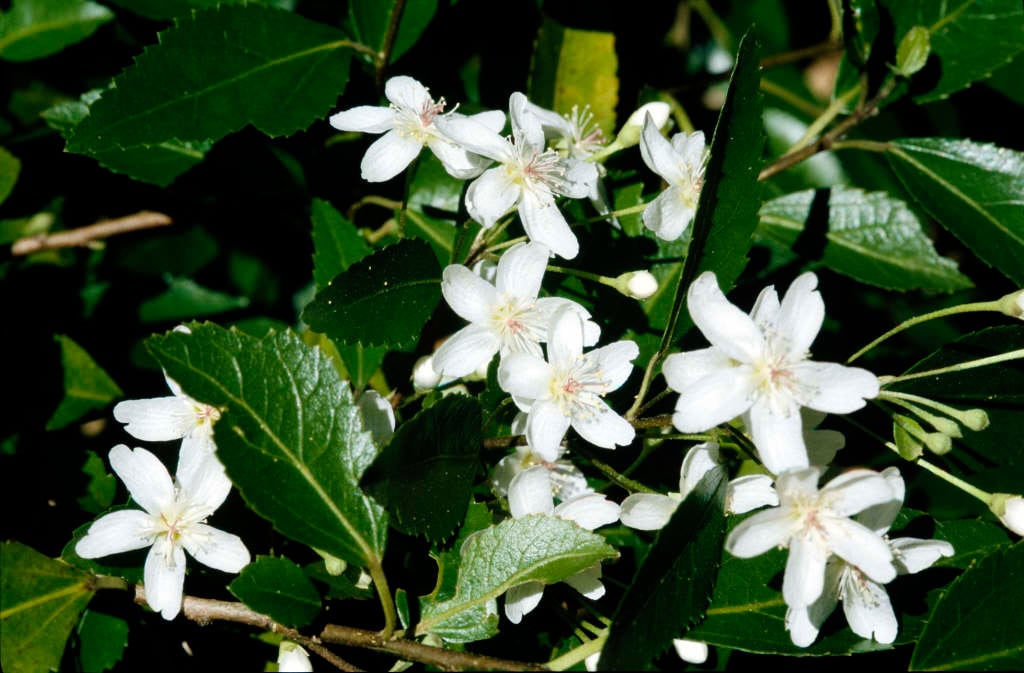Hoheria lyallii
lacebark
A large deciduous shrub or small tree to 7m, with broadly-ovate, softly hairy grey-green leaves and slightly fragrant white flowers to 4cm wide, in clusters in summer

Buy this plant
Size
Ultimate height
4–8 metresTime to ultimate height
5–10 yearsUltimate spread
2.5–4 metresGrowing conditions
Moisture
Moist but well–drainedpH
Alkaline, NeutralColour & scent
| Stem | Flower | Foliage | Fruit | |
| Spring | Green Grey Silver | |||
|---|---|---|---|---|
| Summer | White | Green Grey Silver | ||
| Autumn | Green Grey Silver | |||
| Winter |
Position
- Full sun
- Partial shade
Aspect
West–facing or South–facing or East–facing
Exposure
Sheltered Hardiness
H4Botanical details
- Family
- Malvaceae
- Native to GB / Ireland
- No
- Foliage
- Deciduous
- Habit
- Bushy
- Genus
Hoheria can be evergreen or deciduous shrubs or small trees with simple, toothed leaves, often distinctive juvenile foliage on young plants, and terminal umbels of fragrant white, 5-petalled flowers with prominent stamens
- Name status
Correct
- Plant range
- New Zealand
How to grow
Cultivation
Grow in moderately fertile, well-drained preferably neutral or alkaline soil in full sun or part shade in a sheltered position
Propagation
Propagate by seed in a cold frame in autumn; root semi-ripe cuttings in late summer or autumn
Suggested planting locations and garden types
- City and courtyard gardens
- Coastal
- Cottage and informal garden
- Wall side borders
- Flower borders and beds
Pruning
Pruning group 1 in spring or after flowering but pruning is seldom necessary
Pests
Generally pest-free
Diseases
May be susceptible to coral spot, particulary in damp shady sites and honey fungus
Get involved
The Royal Horticultural Society is the UK’s leading gardening charity. We aim to enrich everyone’s life through plants, and make the UK a greener and more beautiful place.